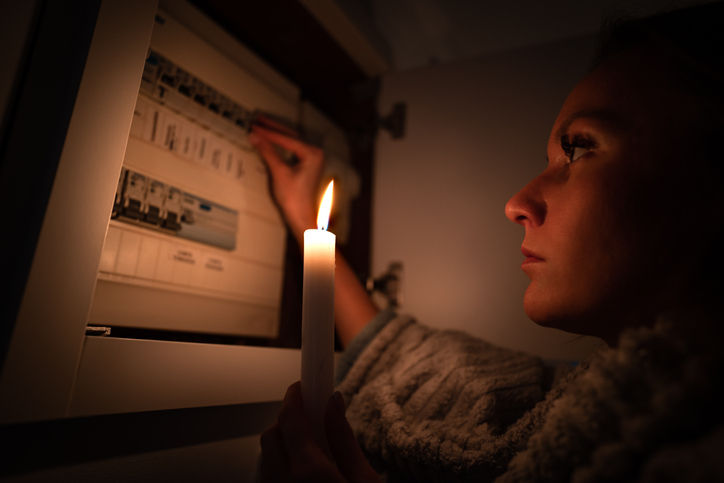Why Choosing Premium Solar Products Pays Off — 3 Stories You Should Hear First
- sunny energy
- Jul 18
- 4 min read

Not all solar products are created equal.
Every week, we hear from frustrated dealers, EPCs, and homeowners across the Gulf and Africa — people who thought they were saving money but ended up paying twice.
In this post, we’re sharing three real-world stories from Muscat, Manama, and Nairobi — each showing what happens when the wrong solar choices go wrong. And more importantly, what today’s professionals are doing differently.
1. Abdul’s “Good Deal” Cost Him His Solar Products
Muscat, Oman
Abdul had finally made the decision: he wanted solar. A cleaner option, long-term savings — it all made sense.
He called around, and a small installer gave him a “very good price.” The inverter? Not a brand he knew. But it worked, and the installer promised it was “just like the expensive ones.”
Within a year, strange things began happening:
His fridge stopped cooling properly
His TV rebooted randomly
His washing machine wouldn’t finish its cycles
When an electrician inspected the system, the verdict was clear:
“Your inverter is sending micro-surges. It’s not regulating voltage well. It’s slowly damaging your appliances.”
The cheap inverter, with no proper certifications or voltage control, was silently ruining his home appliances. By the time Abdul realized it, he had already spent more than what a high-quality inverter would’ve cost — in repairs, stress, and replacements.

2. Fatima’s Battery Was Dead in 18 Months
Manama, Bahrain
Fatima had installed solar backup to deal with the occasional power cuts in her neighborhood.
Her system included a lithium battery that promised “5 hours of backup” — and it worked… for a while.
But within 18 months, she noticed:
Her backup dropped to just 20 minutes
The system began disconnecting during basic use
Her installer had disappeared — and there was no warranty coverage
A local technician finally told her the truth:
“This battery uses low-grade cells. The BMS is minimal. It’s not designed for long-term performance.”
Her battery had degraded more than 70% in less than two years. Even though it looked like a premium battery — with glossy branding and nice packaging — it was all just a label.

3. Omar’s Company Lost a Client — And Its Reputation
Nairobi, Kenya
Omar is an EPC contractor who built his company over 8 years through word of mouth and reliable delivery.
Looking to improve his profit margins, he started sourcing solar inverters and batteries from a lesser-known supplier in China that offered 30% lower prices.
Everything worked — at first.
He completed a 10kW install for a high-profile residential client. But within 6 months:
The inverter kept shutting down under moderate load
The battery backup dropped drastically
The supplier went silent when asked for support or replacements
The client was furious:
“We trusted your company. Now we’re paying again to fix what should’ve lasted 10 years.”
Omar had to replace the system at his own cost, just to protect his company’s name.
“That one job wiped out my profit for the entire quarter,” he says. “Worse, the client told others not to work with us. That hurt more than the money.”
That moment changed how he evaluated products — and partnerships — forever.

From Mistakes to Mastery: Lessons from the Region’s Best Installers
After hard-earned lessons, professionals across the region — from Doha to Baghdad, from Jeddah to Lusaka — are rethinking how they choose solar components.
They’ve seen the cost of failure:
Warranty headaches
Reputational damage
Delayed projects
Lost referrals
Now, they demand three non-negotiable standards:
1. Proven Track Record — Not Just Claims
Serious EPCs don’t rely on promises. They look for:
Equipment installed in 100+ countries
Recognition in bankability or compliance reports
Project references in utility-scale, residential, and NGO deployments
Verified listings on platforms like TÜV, CE, UL, or IEC
If a product can’t prove field success — it doesn’t make the shortlist.
2. Real Performance Data — Backed by Engineering
Professionals compare products using data — not just price.
They require:
Inverter efficiency ≥ 97.5%, and low THDi to protect appliances
Lithium batteries with ≥ 6,000–8,000 cycles at 90-95 % DoD, using Tier-1 LiFePO₄ cells
Smart BMS or MPPT logic, for power flow safety and optimization
Derating curves and thermal specs that match the Gulf, Sahara, or East African heat
If a brand doesn’t offer transparent datasheets, degradation charts, or certifications, it’s a liability.
3. Regional Support — Not Remote Excuses
Professionals now ask:
Is the brand stocked by authorized local distributors?
Can you get spare parts within 24–72 hours?
Is there real warranty coordination, not just email chains to unknown factories?
The cost of downtime in a solar project isn’t just technical — it’s reputational.
Final Thoughts: Don’t Just Save Money — Protect Your Name
Whether you’re a homeowner or an EPC:
You’ll only make a few solar decisions in your lifetime
But you’ll live with the consequences every day
Choose systems that:
Have proven themselves across regions and climates
Come with real documentation, data, and design logic
Are supported by partners who won’t vanish after the sale
Your client won’t always ask the right questions — but you should.
And when you do, you’ll find there’s a clear difference between cheap, expensive, and valuable.




Comments